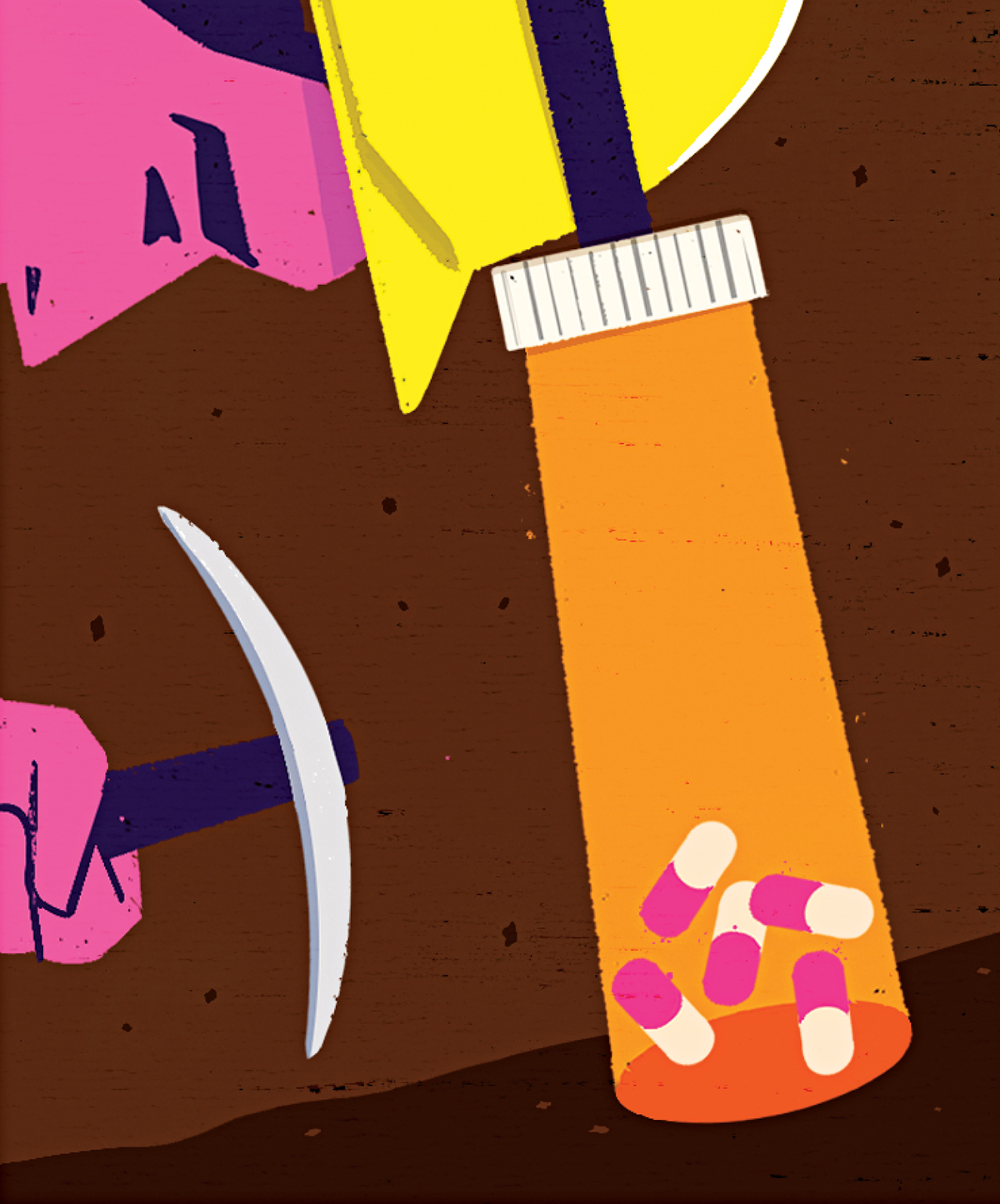Dirty Meds

illustration by chris gash
The world desperately needs new drugs. In the decades since our discovery of antibiotics, disease-causing bacteria have evolved to resist them; at least 23,000 people die in the U.S. each year due to untreatable infections. Fortunately, a pair of local researchers may have found the answer right in our backyard. They’ve identified one potentially game-changing, resistance-proof antibiotic. And they think they’ve also figured out a way to find more.
Kim Lewis, director of Northeastern University’s Antimicrobial Discovery Center, has been leading the effort to find a new class of antibiotics in New England’s dirt, where “microorganisms live in a very crowded environment,” he says. To fight one another for territory, these soil-dwelling microbes use chemical weapons against each other—weapons that humans can theoretically harness.
Exploring microbes for this purpose isn’t revolutionary. For years, researchers have hunted for natural antibiotics by growing microbes in petri dishes and testing them for antibiotic powers. The problem with that approach is that an estimated 99 percent of those microorganisms cannot thrive in the lab. But Lewis and his colleague Slava Epstein, a biologist at Northeastern, have developed a breakthrough technique that allows these bacteria to flourish.
Their method relies on a small plastic device called the iChip, which contains hundreds of tiny holes. Those holes are then covered with thin membranes dotted with pores that allow chemicals to pass in and out. When the iChip is dipped into liquid from a soil sample, each hole captures a bacterial cell. The device is then put back into dirt, and the bacteria continue getting the nutrients they need. “Essentially, you trick them,” Lewis says. The microbes grow as if they’re in their native environment. Once a cell forms a large colony inside the chip, researchers can test whether they release any chemicals that kill disease-causing bugs like Staphylococcus aureas (staph).
Lewis and Epstein cofounded Cambridge’s NovoBiotic Pharmaceuticals in 2003, where they’ve used this approach to cultivate tens of thousands of strains of bacteria. Thus far, they’ve discovered 25 new antibiotics. But the latest, teixobactin, is unusual—in laboratory tests, common pathogens didn’t mutate to resist it, as would be expected. Lewis and Epstein believe teixobactin attacks parts of bacteria that don’t evolve, findings they published in Nature this January.
What kind of a bug produces such a powerful weapon? Teixobactin came from a previously unknown bacterium, which Lewis speculates may be a predator that kills and eats other microbes. And he’s optimistic that there are many more such killers out there.
It could take years to turn the compound, which came from soil in a grassy Maine field, into a marketable drug. In the meantime, Lewis and Epstein’s work promises to help reinvigorate the hunt for new, life-saving drugs.

